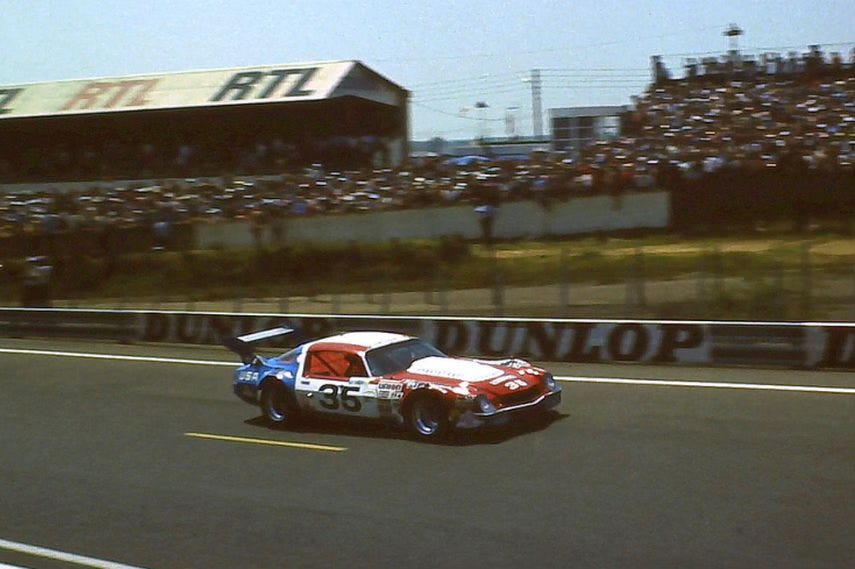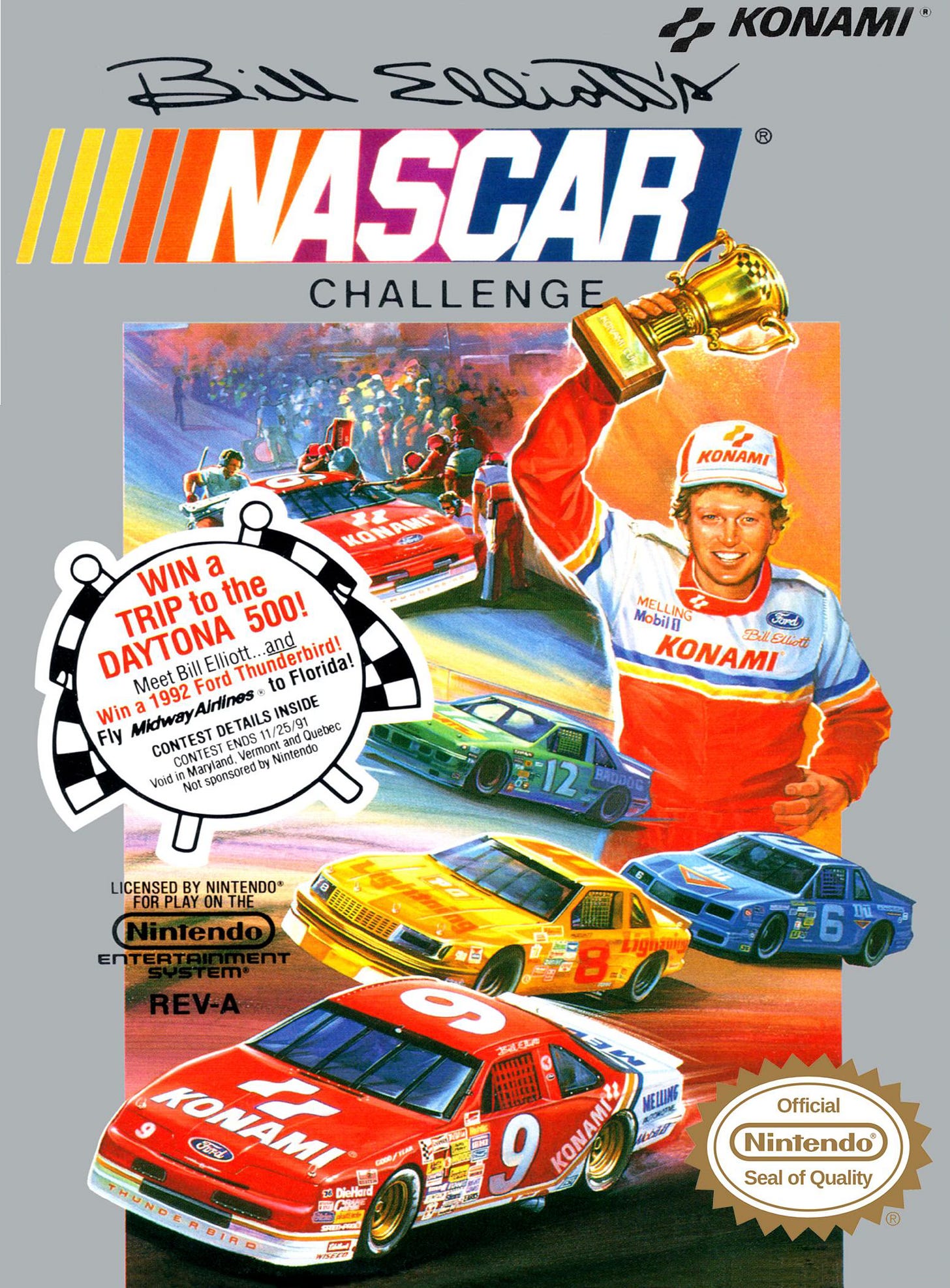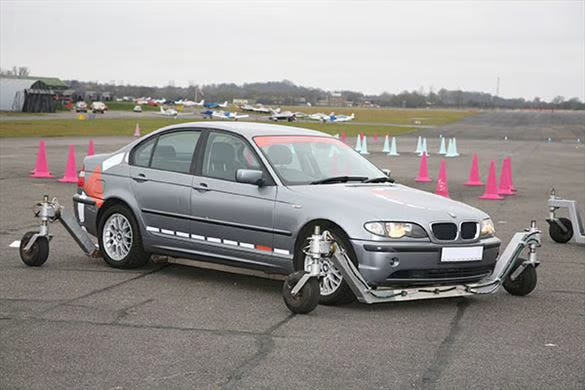Just over a week ago, we—Sam Smith, Jeff Braun and I—released an episode of the It’s Not The Car podcast with an in-depth and opinionated recap of when a good ol’ boy named Cale went to Le Mans. It was really a treat to record, mostly because it was fun to go back in time and think about what the people involved had to go through to make it happen (and Sports Illustrated ran a great story about it, HECK, MES AMIS, IT’S ONLY OL’ CALE).
Many drivers and racers of road courses look down a bit on what they believe only turning left on an oval is like, and the amount of skill and talent it takes. How hard can it be to race in NASCAR? How good can a driver be who only ever turns left?
When I was a teen, I lived for the next issue of Road & Track magazine and stories about Formula One, sports cars, and the Indy 500. Once a month was not enough to fuel my thirst to learn more about cars and driving, so I also read almost every issue of Stock Car and Hot Rod magazines.
Having grown up going to oval tracks most weekends with my dad (he worked on Super Modifieds, sprint cars, and late model stock cars), the world of NASCAR I read about in the pages of Stock Car magazine was very familiar to me. The performances of Richard Petty, David Pearson, Bobby and Donnie Alison, and Cale Yarborough were almost as big a deal was what Jimmy Clark, Jackie Stewart, Graham Hill, A.J. Foyt, and Mario Andretti were doing. Okay, not entirely, but close. They were all the best in their own form of motorsport, and I was in awe of what they did… and I wanted to do what they did. Turning left, turning right, both; it didn’t matter. I just wanted to do what they did.
So, going back and reliving the way Cale Yarborough approached racing at Le Mans in 1981, and talking about it with Sam and Jeff on our podcast was more fun that I expected (Sam often comes up with ideas for the show that, at first, seem, shall we say, “odd”, but turn out to be fantastic. Check out another episode about Babs, as an example).
Cale had won three NASCAR championships before deciding to semi-retire to spend more time with his daughters. And that’s when the opportunity to race a wild oval-track-based Camaro at Le Mans came along.

I won’t go into detail what happened at Le Mans in 1981. I’ll let you tune into our podcast for that. But here’s one of the things that I took away from this story.
Cale’s second lap ever of the 8-plus-mile Le Mans circuit in the first practice session was almost 30 seconds slower than his first. If that seems a bit strange, consider that he did not use a simulator to prepare, or even have YouTube to watch in-car videos. The reason his second lap was slower than the first was that he’d forgotten where exactly part of the track went!
Within a few laps, though, he was turning laps just below the 4-minute mark, in the mix with experienced sports car drivers in Ferraris and other cars that were a little more appropriate for Le Mans than his tube-frame, short track oval-based Camaro.
While I’ve never seen any video of Cale’s driving (did they have video cameras back in 1981?!!), I feel fairly sure that his lines through our favorite corners in the La Sarthe countryside were not ideal. What I do feel sure about is that Cale was driving that Camaro at its limits.
And that’s really what this story is about. In fact, it’s about how roundy-round NASCAR drivers can drive the wheels off a car at the ragged edge, and do it with little to no thought.
How do I know? I’ve seen the car control skills of a NASCAR Champion, up close and personal, from the passenger seat.
Way back in 1990, a video game was about to be released to the market, the Bill Elliott NASCAR Challenge. Created by a small team at Distinctive Software, and overseen by the company’s president, a fellow I’d gotten to know, Don Mattrick.

Shortly after completing the software, Don called me and said that he wanted to take his team of game developers to the local race track, Westwood Motorsport Park, let them play around in a few of his cars, and asked if I could arrange it all, as well as give rides to his team. Oh, and he had arranged for Bill Elliott to join me in the fun… err, work.
Throughout the day, Bill and I took eight software developers for rides, and gave them some tips and coaching when they drove the track themselves.

At the time, I had a high-performance and racing school based at Westwood, and that included having a skid car equipped with outrigger wheels that allowed me—sitting in the passenger seat with a control box—to dial in as much or as little understeer or oversteer as I wanted.
I had just spent an hour or so coaching the developers in the skid car, one at a time, when I looked over and saw Bill getting out of Don’s Porsche 944 Turbo with a smile on his face. He looked at the skid car and asked if he could give it a go. Well, duh, of course. The next thing I know I’m sitting beside Awesome Bill from Dawsonville who’s about to show me his car control.

I had just two cones set up in the middle of the paddock area, where I’d been having the developers drive around in a small oval, around one cone and then the other. Based on their skill level, I would dial in and out the amount of front or rear grip, helping them learn to control a slide.
Now, sitting in the passenger seat, I looked over at Bill in the driver’s seat and told him to just drive around the cones as if on an oval. At that point he turned to me and asked, “Which way do you want to me start?” to which I replied that it was his decision. In his southern Georgian drawl, he said, “I think I’ll turn left.” I replied, “I figured you would!”
For the next 15 minutes or so, Bill pretended he was driving a World of Outlaws sprint car, pitching the skid car in beautiful slides entering the tight turn around a cone, straightening up and accelerating towards the other cone. It was a blast to watch him play with the steering wheel and throttle, even though we were doing no more than 30 MPH at any time.
I got an even better view and understanding of Bill’s car control a little later in the day….
You should know that this event was happening in the middle of January, at a track on the outskirts of Vancouver, Canada. While some people think that everyone in Canada lives in igloos(!!!), that’s not exactly accurate. Still, it was a cold day. In fact, while it was perfectly sunny all day, there was a small strip of frozen water (ice!) that ran across the middle of the Esses. Anyone who had ever raced at Westwood knew that was the last part of the track to dry, since water tended to drain across the track.
By this point in my life, I’d driven thousands of laps at Westwood. Practically every car I’d ever driven was either barely-barely-barely-flat through the Esses, or required a tiny breathe of the throttle. On this day, with the foot-wide strip of wet and ice draining through the middle of the right-left combo, and the fact that we were just here to help Don’s developers have fun, Bill and I were giving the Esses a generous lift.
Towards the end of the day, Bill asked if I’d give him a ride around the track in Don’s 944 Turbo, which I thought was pretty cool. So, off we went, me behind the wheel and Awesome Bill from Dawsonville, NASCAR and 2-time Daytona 500 Champion in the passenger seat. Did I feel a bit of pressure? Nah. A lot of pressure? That’s a bit more like it.
I laid down half a dozen of my better laps of the day, then turned to Bill and said, “It’s your turn now. Actually, it’s my turn to watch you.”
In pitlane we switched seats, and off we went with Million Dollar Bill (another nickname he’d garnered for winning 3 out of 4 of NASCAR’s biggest races in a season, and taking home a million-dollar bonus) at the wheel, and me, big-eyed, observing from the passenger seat. How often does one get the chance to watch someone like this drive?
What Bill lacked in finesse and detailed technique, he more than made up for in car control. He was quick.
On the third lap, as we approached the Esses, Bill turned and looked at me, grinning, and said in that beautiful Georgia drawl, “I think I’ll take ‘er flat.”
All I could do was smile. And maybe grip the doorhandle a bit tighter.
Entry was perfect. But next, as we crossed the strip of wet and ice, things got busy! It felt to me like we were at least at a 45-degree angle to the track in one direction, then the other, then back, then to the other again. Bill’s arms were a blur. At one point I was looking directly out the windshield in front of me at the pit wall Armco barrier.
Then, things went relatively quiet, other than the sound of the Porsche’s Turbo engine at full throttle. We were pointing directly up the front straight, crossing the Start/Finish line, and heading for Turn One again.
We both burst out laughing, giggling like a couple of 3-year-olds, one with a Southern drawl, the other with a Canadian non-drawl.
Bill slapped the steering wheel a couple of times, turned to me, and half-giggled out, “Won’t do that again.”
I’d always had huge respect for the car control abilities it takes to arm wrestle a big ol’ stock car around the bullring short ovals that guys like Bill Elliott have, but that day took that respect to a whole other level.
That’s why, when Sam, Jeff and I talked about Cale Yarborough at Le Mans, I could almost hear Cale in his South Carolina drawl say something along the lines of, “I think I’ll take ‘er flat,” then just flailing at the steering wheel to make sure he was still heading in the direction he wanted.
You’ve heard me before saying that you should “drive the car, not the track.” That’s what Bill and Cale did, and certainly my experience of Awesome Bill’s car control influenced my thinking. His line may not have been perfect, but he was fast! And that came down to his car control. He drove the car. Wow, did he ever!
